On February 12 (January 15, At Ty 2025), the incense offering ceremony to celebrate the 418th birthday of the founder of embroidery Le Cong Hanh at Tu Thi communal house (Hang Gai ward, Hoan Kiem district, Hanoi) took place with many unique activities, attracting tourists . Notably, the summary of the artist residency project "Silk - Tree color" and the ancient hand-embroidered painting were displayed at the incense offering ceremony.
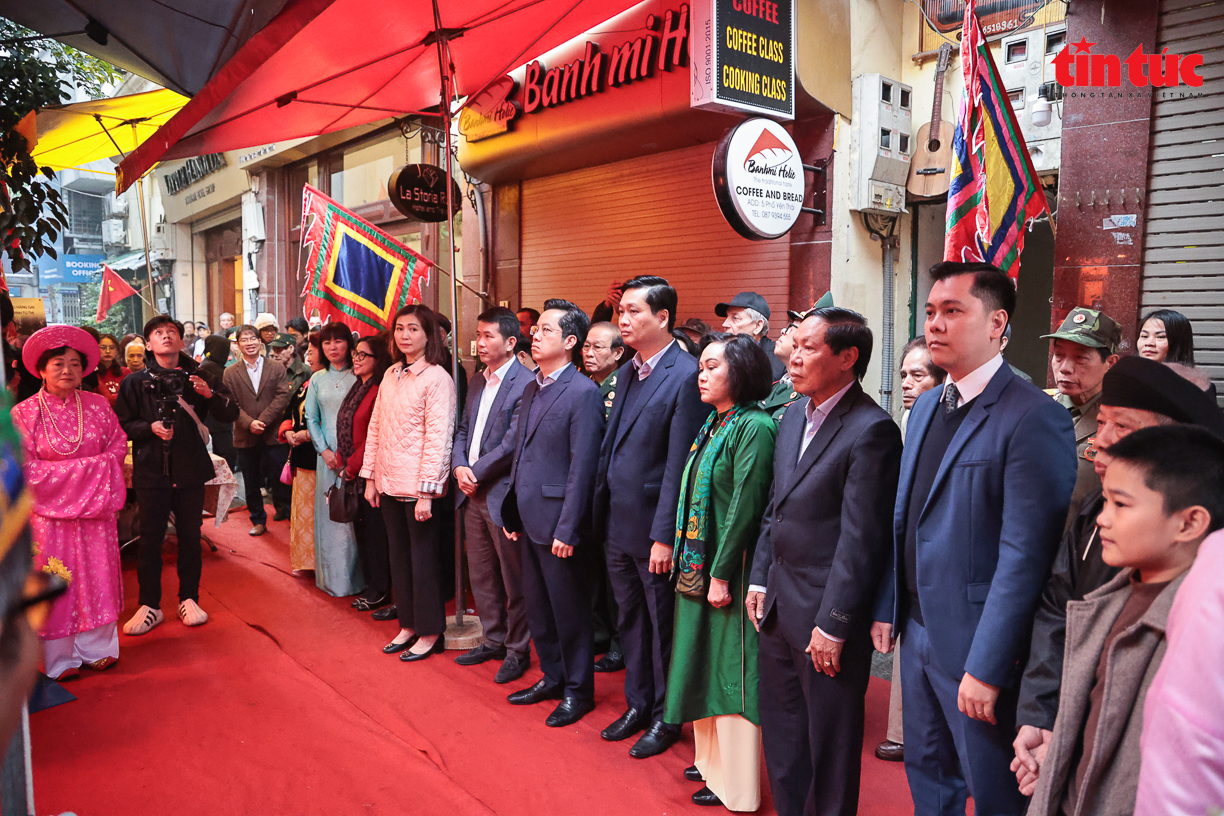 Leaders of Hoan Kiem district, along with delegates, residents and tourists, came to offer incense to the founder of embroidery Le Cong Hanh at Tu Thi communal house.
Leaders of Hoan Kiem district, along with delegates, residents and tourists, came to offer incense to the founder of embroidery Le Cong Hanh at Tu Thi communal house.
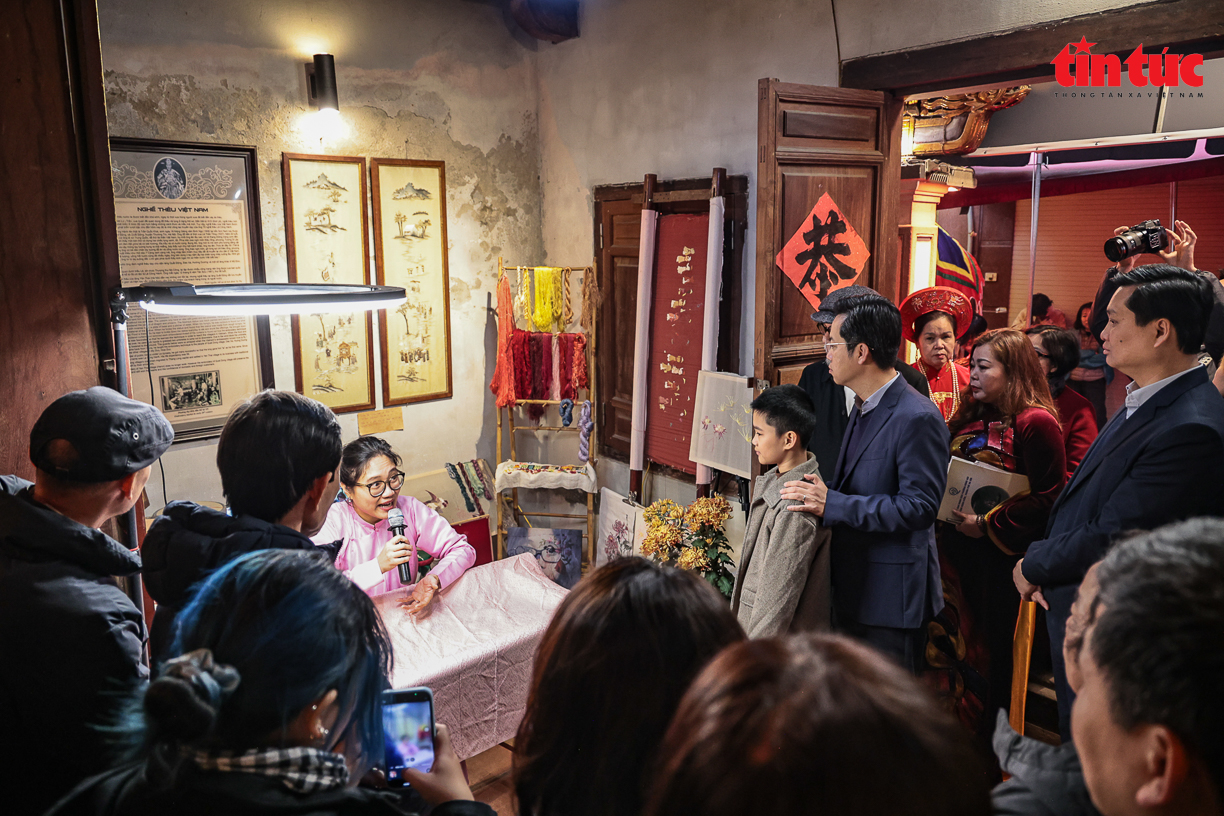 The highlight of the program is the project "Artist in residence with the theme of Silk - Tree color" organized by the People's Committee of Hang Gai ward in collaboration with artist Pham Ngoc Tram.
The highlight of the program is the project "Artist in residence with the theme of Silk - Tree color" organized by the People's Committee of Hang Gai ward in collaboration with artist Pham Ngoc Tram.
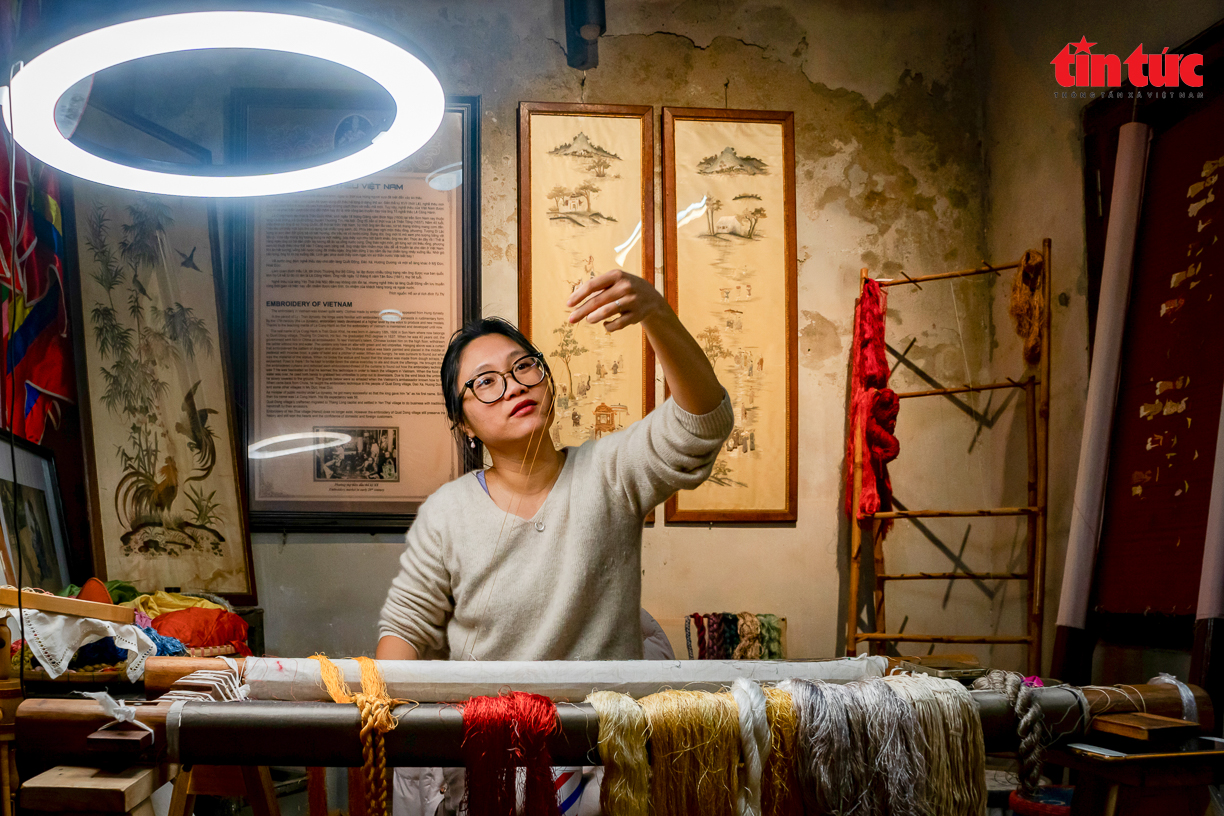 Artist Pham Ngoc Tram directly practices embroidery techniques, interacting with artists, art practitioners and tourists.
Artist Pham Ngoc Tram directly practices embroidery techniques, interacting with artists, art practitioners and tourists.
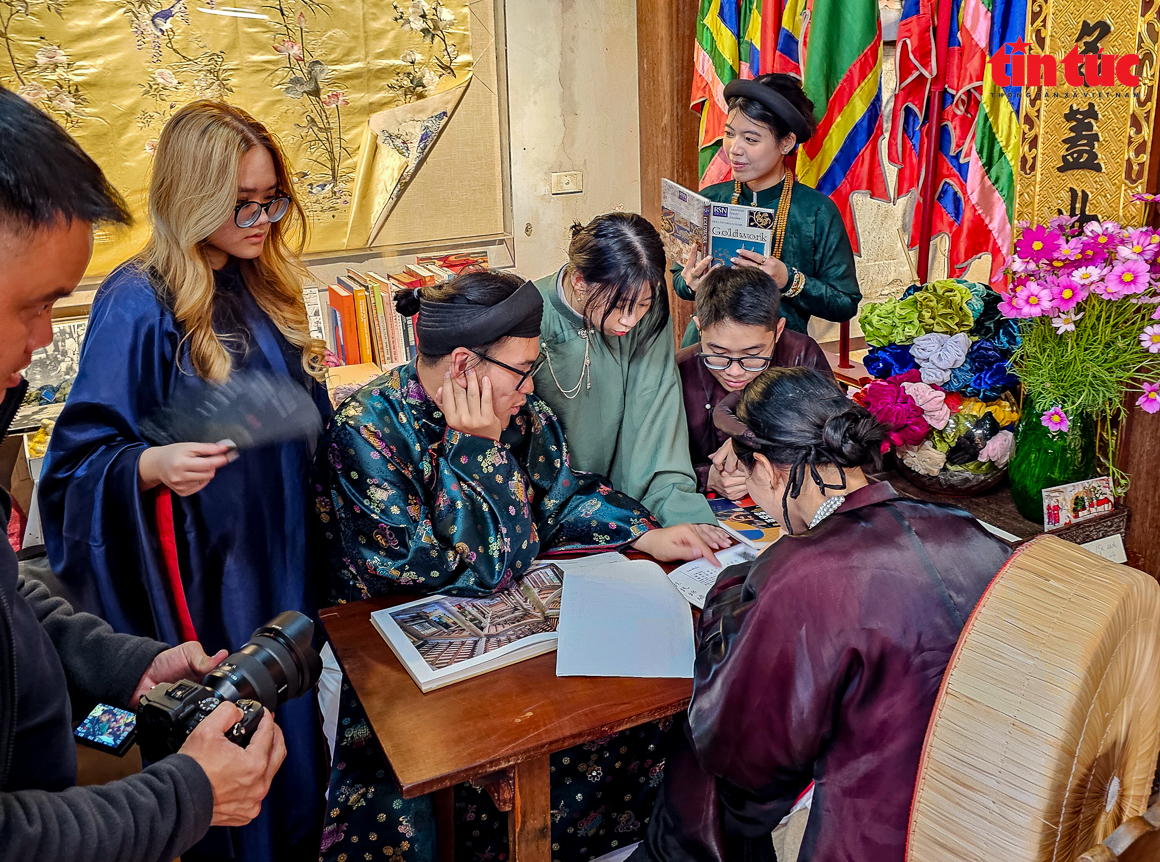 The project attracts a large number of tourists to experience.
The project attracts a large number of tourists to experience.
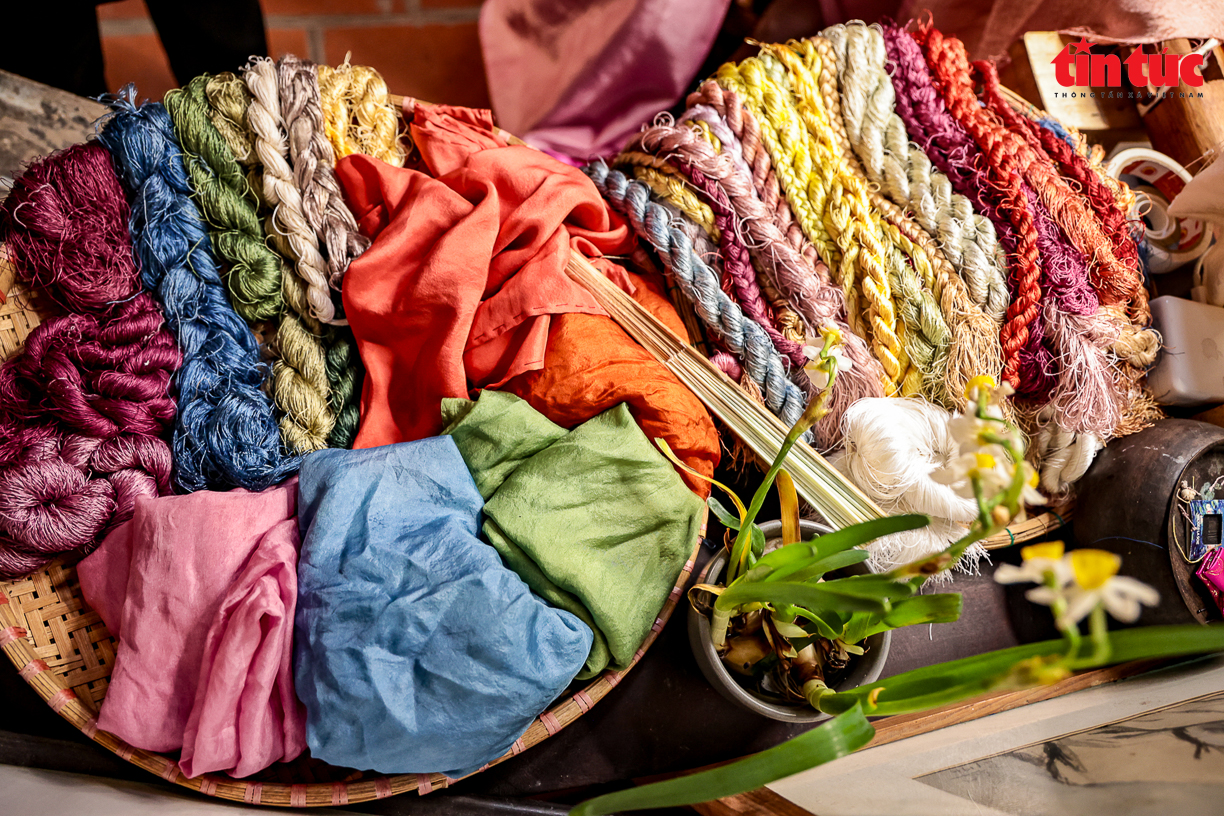 The red color for embroidery thread is taken from vang wood and ant wings; the yellow color is taken from gardenia fruit, huang vine, honey mong flower, jackfruit wood, young mango leaves...
The red color for embroidery thread is taken from vang wood and ant wings; the yellow color is taken from gardenia fruit, huang vine, honey mong flower, jackfruit wood, young mango leaves...
 Artists are inspired by heritage cultural architecture to tell ancient stories associated with contemporary art through silk threads and lines.
Artists are inspired by heritage cultural architecture to tell ancient stories associated with contemporary art through silk threads and lines.
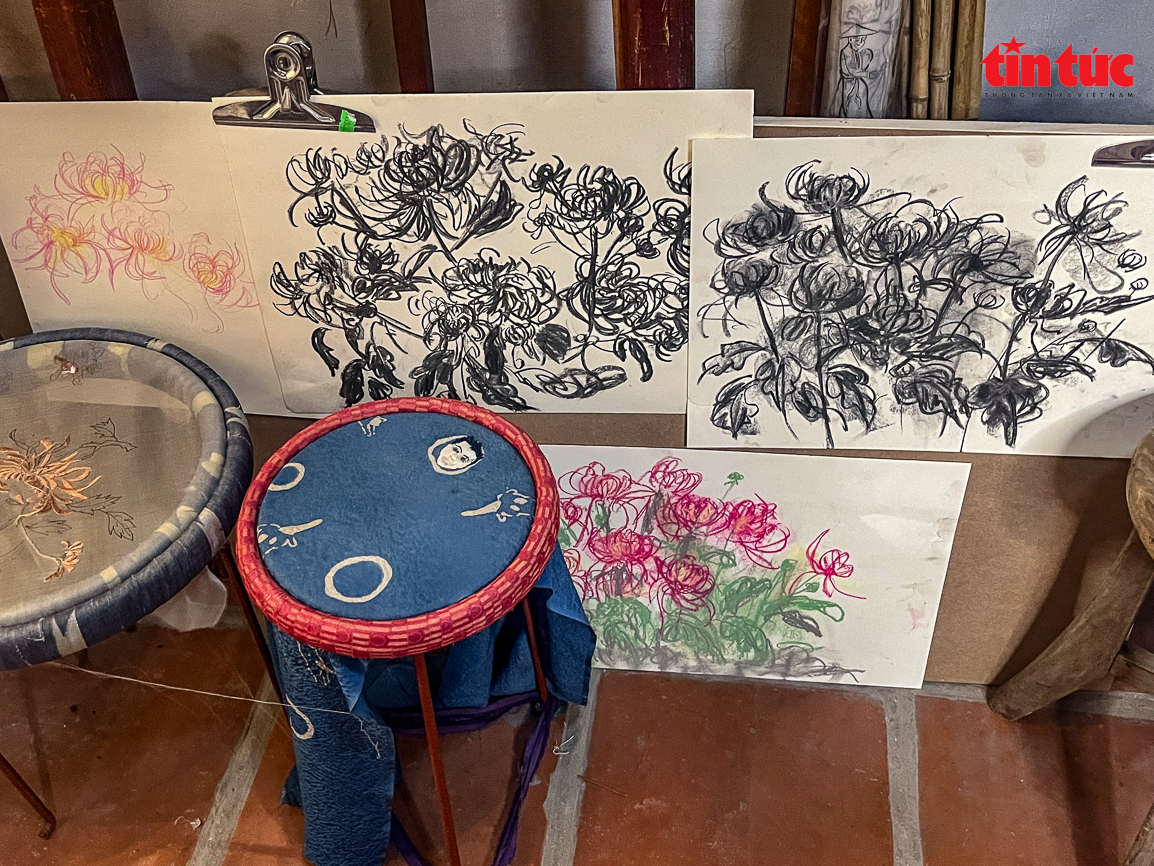 Artist Pham Ngoc Tram believes that traditional embroidery is a type of heritage that requires a high level of interdisciplinary work.
Artist Pham Ngoc Tram believes that traditional embroidery is a type of heritage that requires a high level of interdisciplinary work.
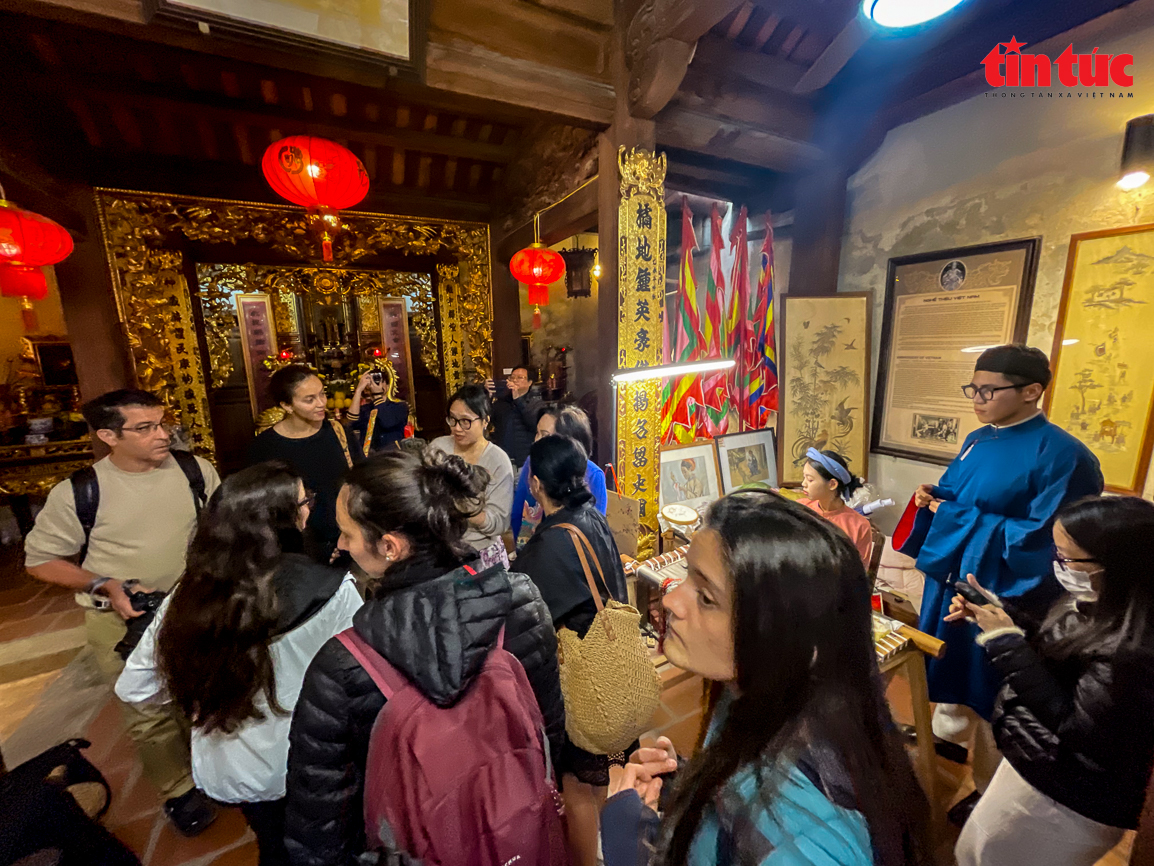 Creative art activities and community exchanges at Tu Thi Temple attract tourists.
Creative art activities and community exchanges at Tu Thi Temple attract tourists.
 Artist Pham Ngoc Tram is an embroidery artist who contributes to putting Vietnamese embroidery art on the world embroidery art map through research, teaching, cultural exchange and exhibitions.
Artist Pham Ngoc Tram is an embroidery artist who contributes to putting Vietnamese embroidery art on the world embroidery art map through research, teaching, cultural exchange and exhibitions.
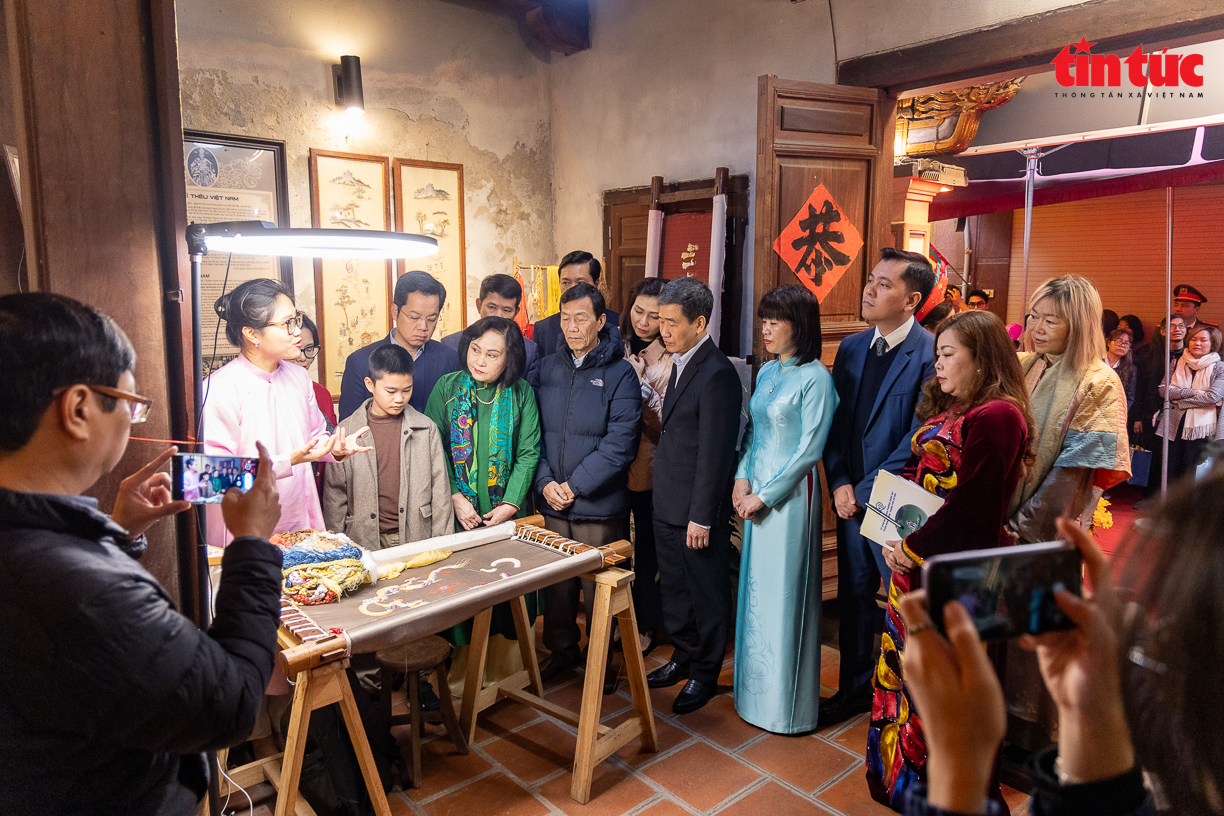 Introducing heritage embroidery techniques and ancient knowledge of traditional materials such as silk, silk thread and natural dyes.
Introducing heritage embroidery techniques and ancient knowledge of traditional materials such as silk, silk thread and natural dyes.
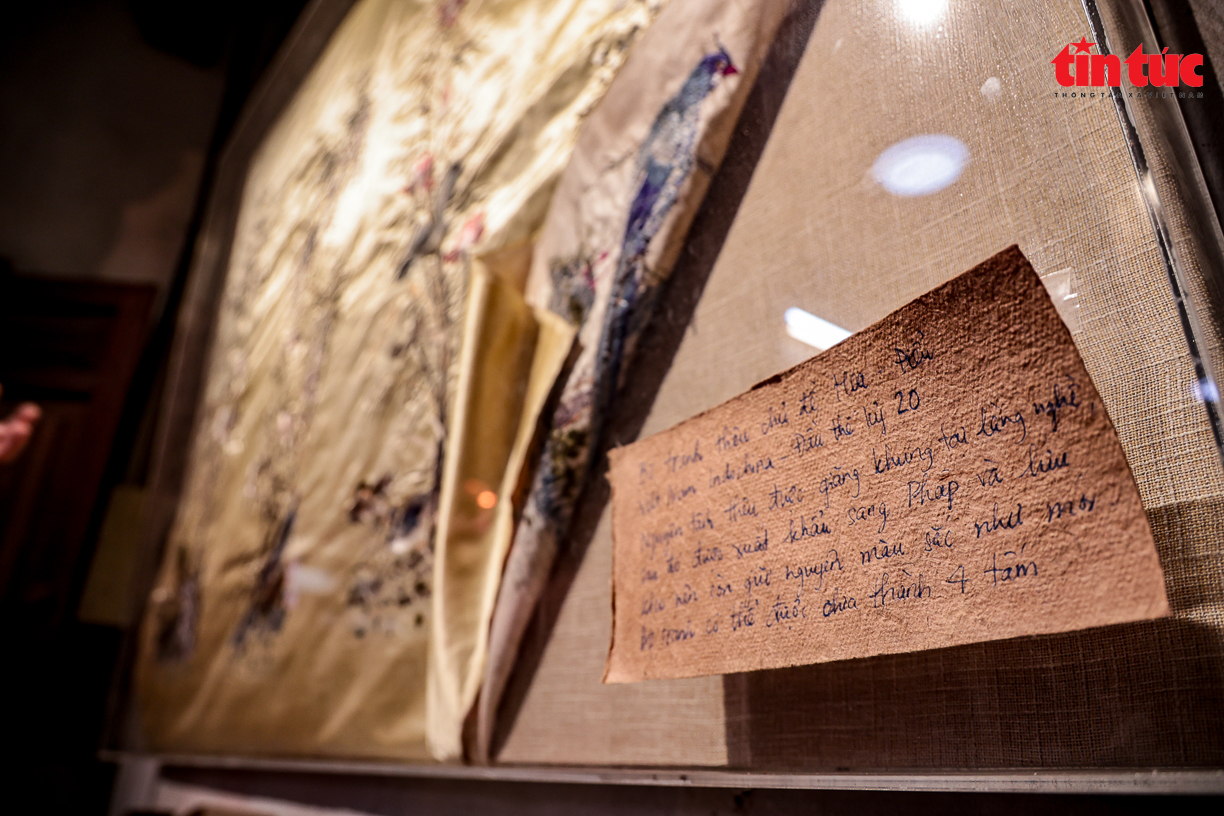 Notably, at this year's incense offering ceremony, there was an ancient hand-embroidered painting made by a Vietnamese artisan, dating back more than 100 years.
Notably, at this year's incense offering ceremony, there was an ancient hand-embroidered painting made by a Vietnamese artisan, dating back more than 100 years.
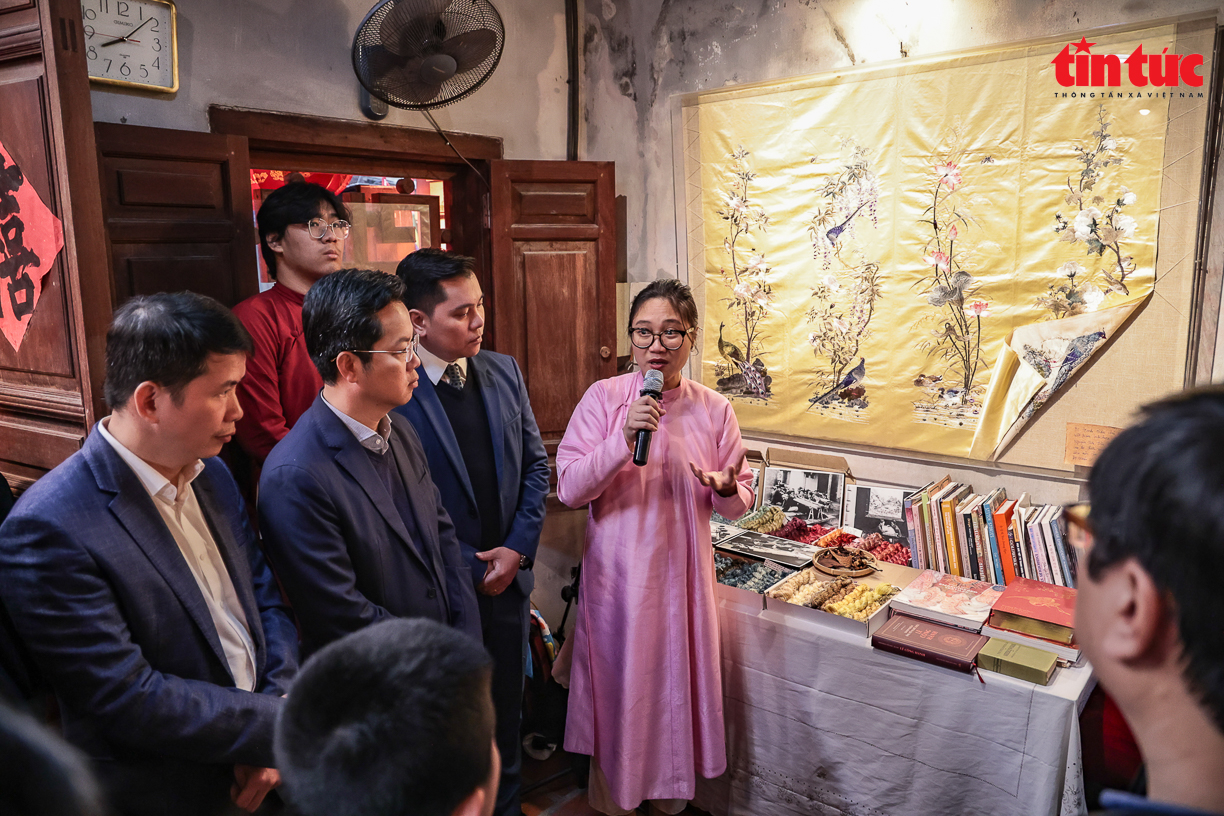 The painting appeared from the Indochina period, embroidered with images of the four seasons: Spring, Summer, Autumn, Winter.
The painting appeared from the Indochina period, embroidered with images of the four seasons: Spring, Summer, Autumn, Winter.
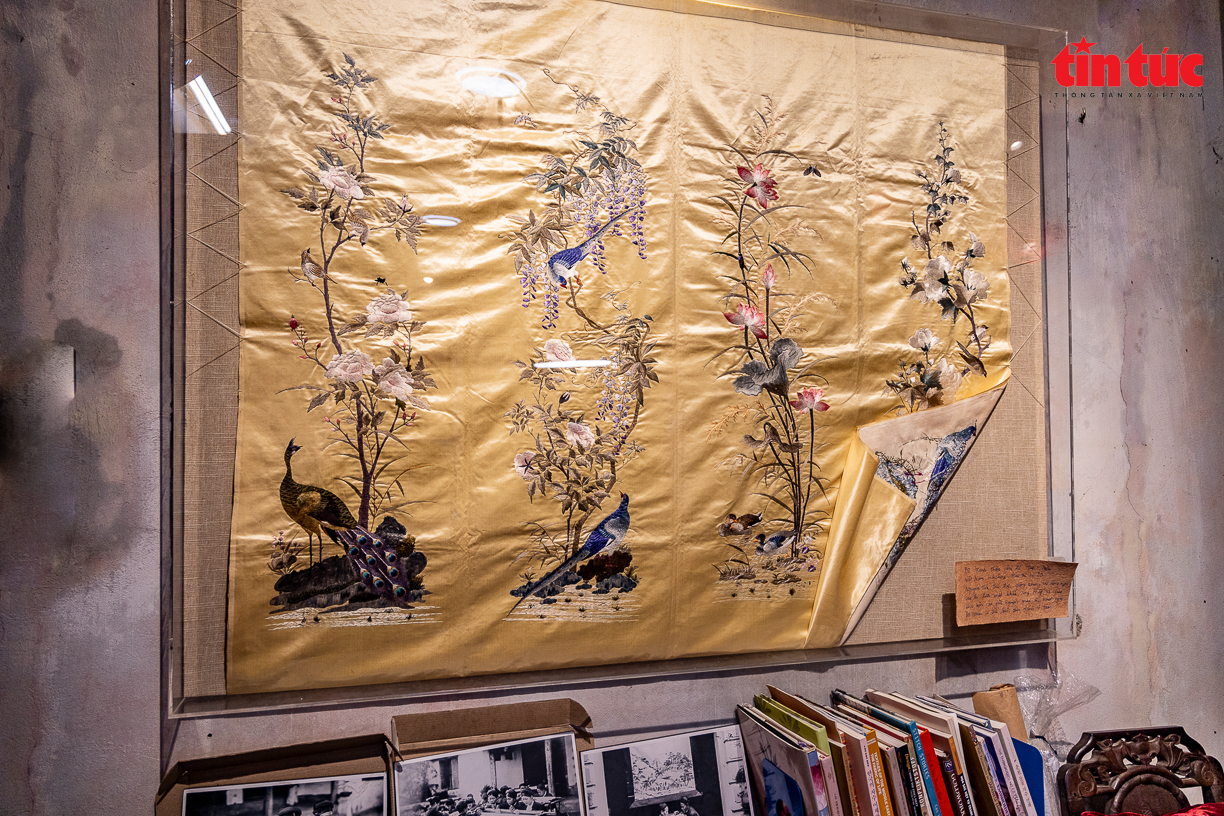 The embroidery remains intact and framed.
The embroidery remains intact and framed.
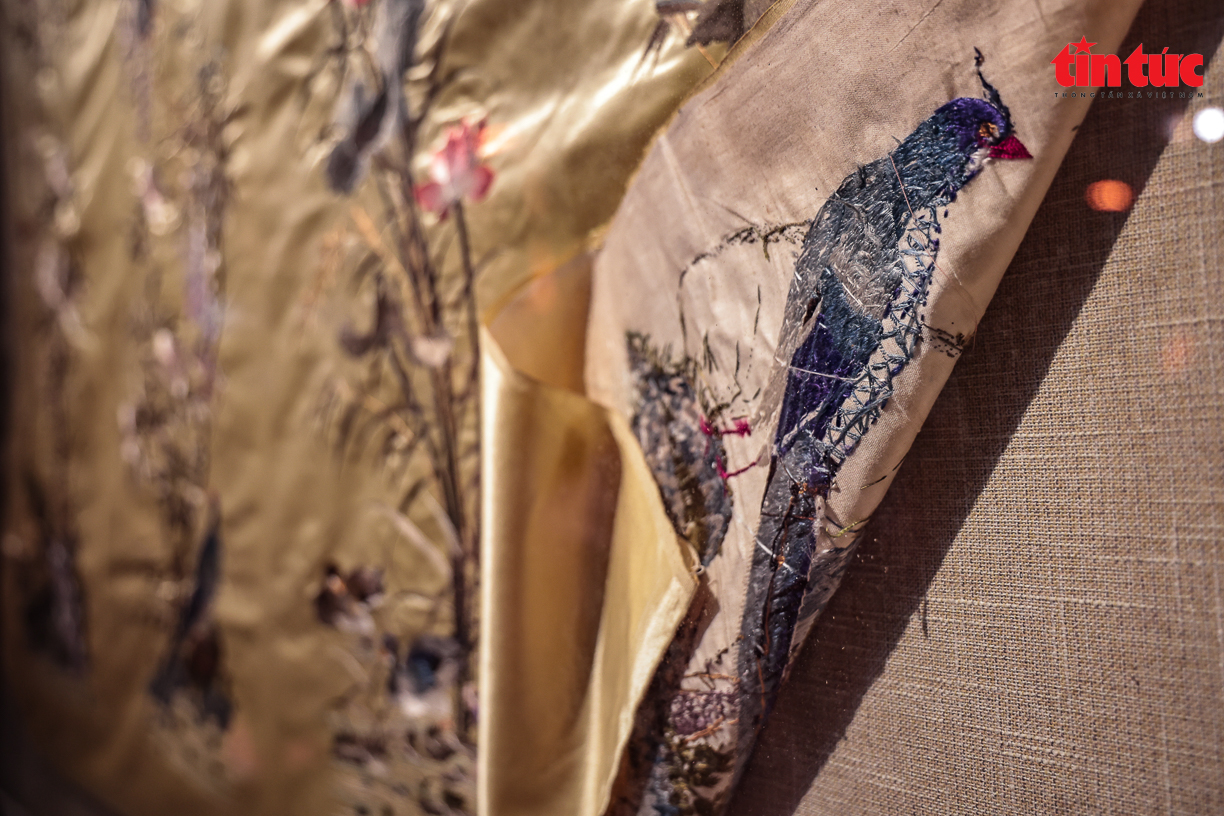 Thanks to careful preservation, the hand-embroidered painting still retains its original color, and each needle and thread is still clearly visible.
Thanks to careful preservation, the hand-embroidered painting still retains its original color, and each needle and thread is still clearly visible.
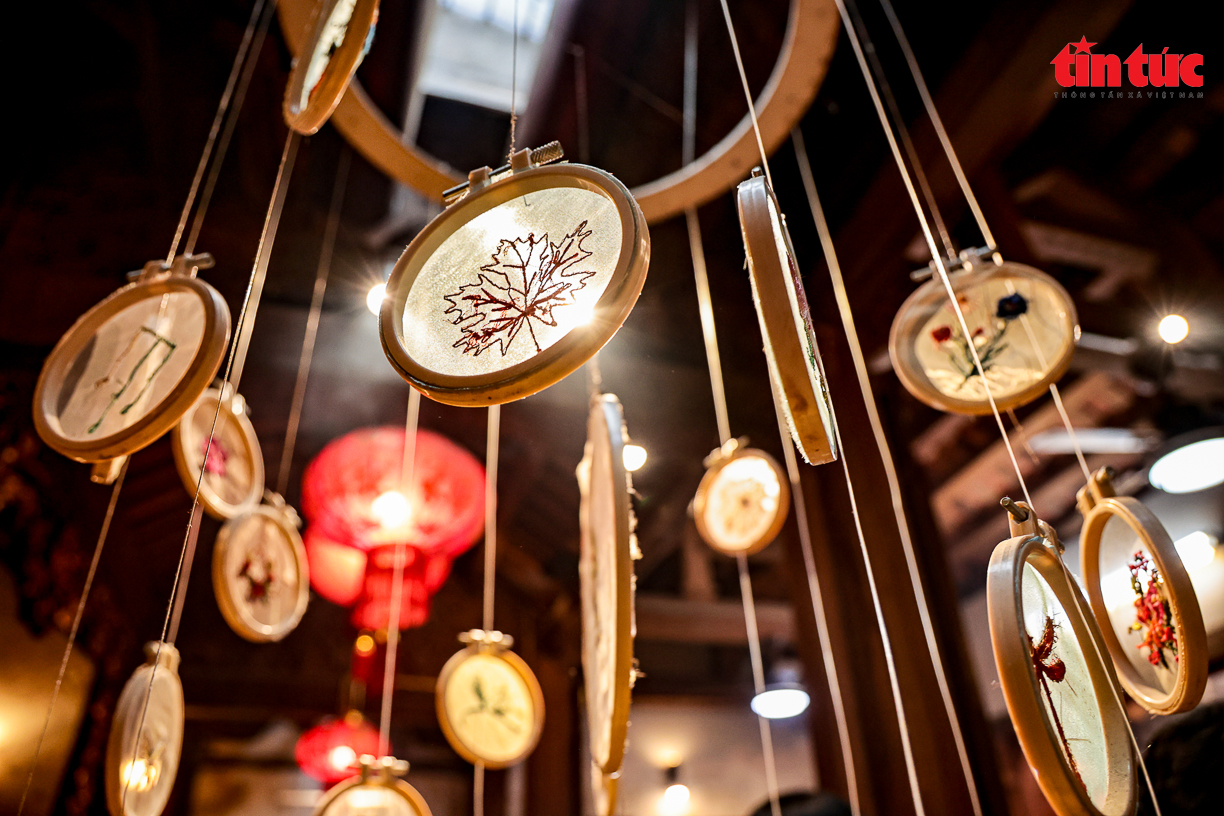 Tu Thi Temple at 2A Yen Thai Street, Hang Gai Ward, Hoan Kiem District, Hanoi is the place to worship the founder of the embroidery profession, Le Cong Hanh.
Tu Thi Temple at 2A Yen Thai Street, Hang Gai Ward, Hoan Kiem District, Hanoi is the place to worship the founder of the embroidery profession, Le Cong Hanh.
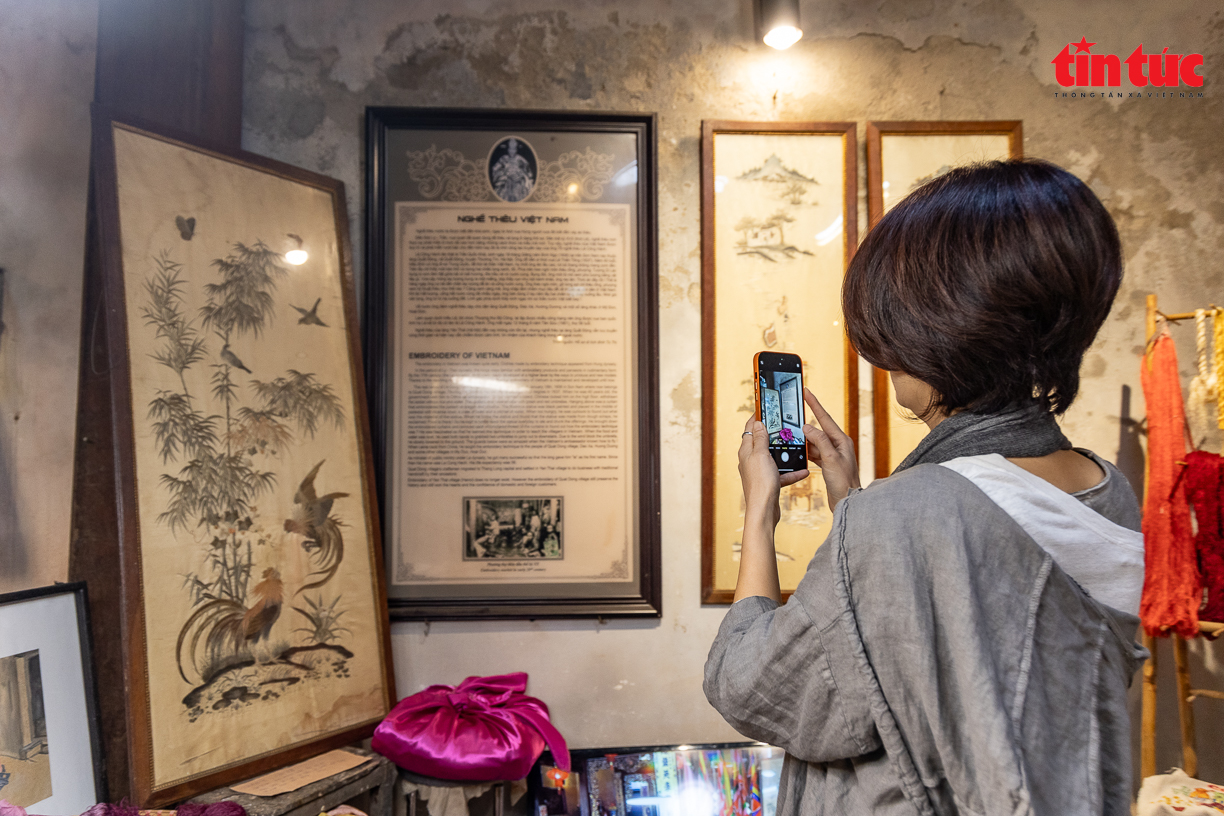 According to historical documents, he was intelligent and quick-witted, learned the sophisticated techniques of embroidery and parasol making and taught them to the people.
According to historical documents, he was intelligent and quick-witted, learned the sophisticated techniques of embroidery and parasol making and taught them to the people.
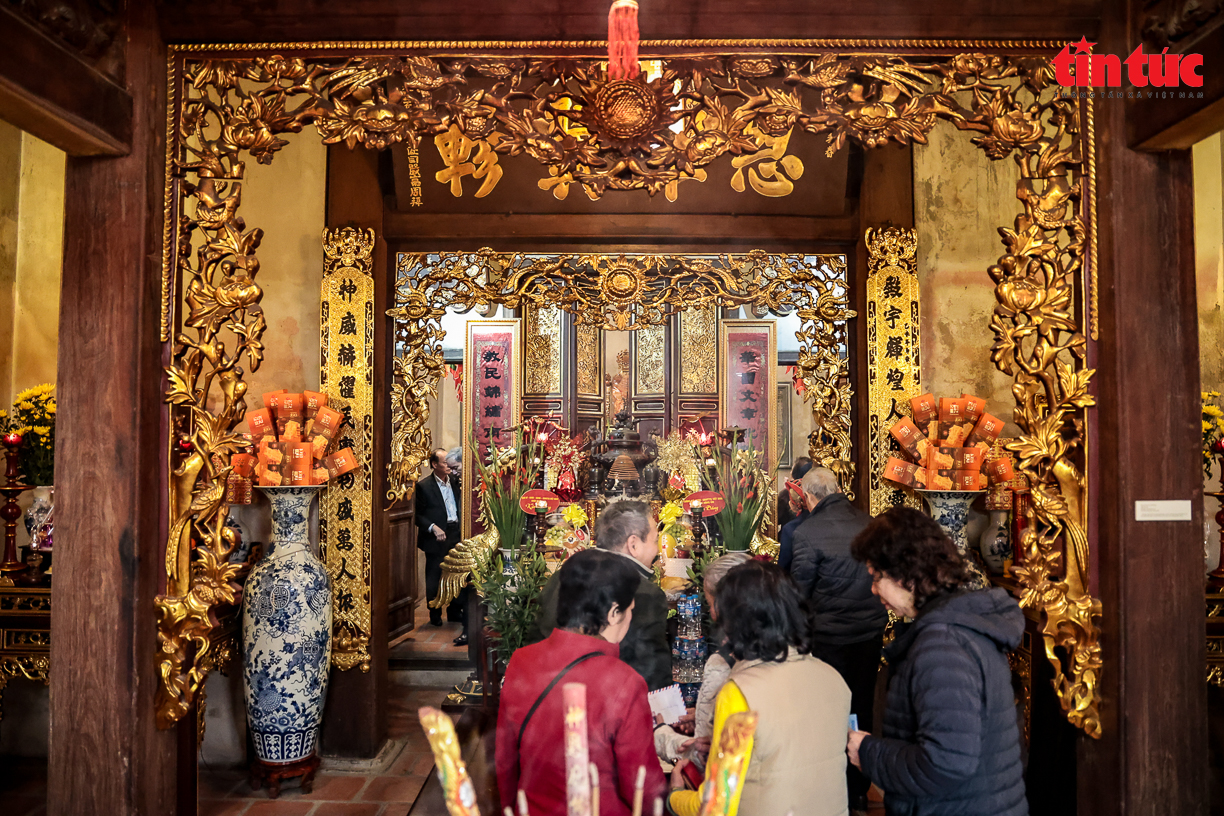 Due to his many achievements, he was granted the title of Kim Tu Vinh Loc Dai Phu by the royal court, the position of Ta Thi Lang of the Ministry of Public Works, the title of Thanh Luong Marquis, and was given the royal surname and the name Le Cong Hanh by the king.
Due to his many achievements, he was granted the title of Kim Tu Vinh Loc Dai Phu by the royal court, the position of Ta Thi Lang of the Ministry of Public Works, the title of Thanh Luong Marquis, and was given the royal surname and the name Le Cong Hanh by the king.
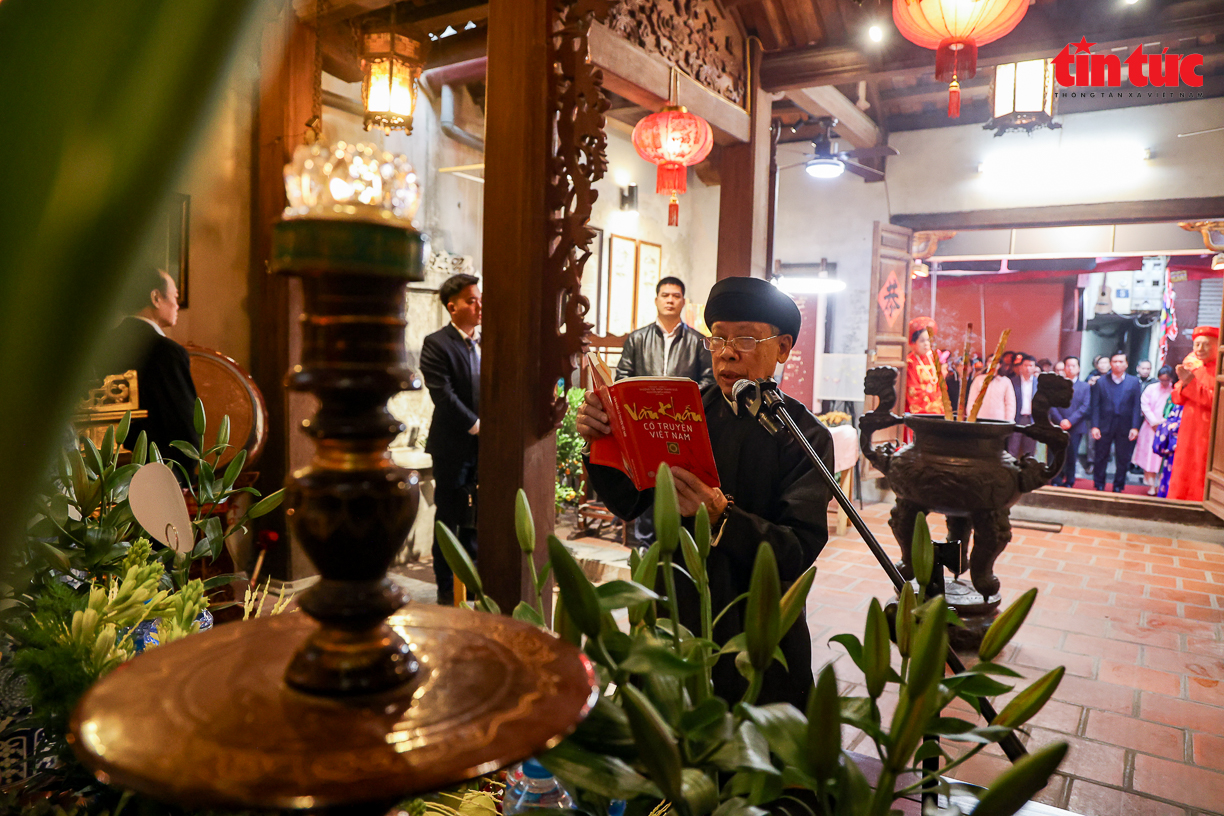 Tu Thi Communal House was built in 1891. In 2025, the communal house was honored to receive the National Monument ranking certificate.
Tu Thi Communal House was built in 1891. In 2025, the communal house was honored to receive the National Monument ranking certificate.
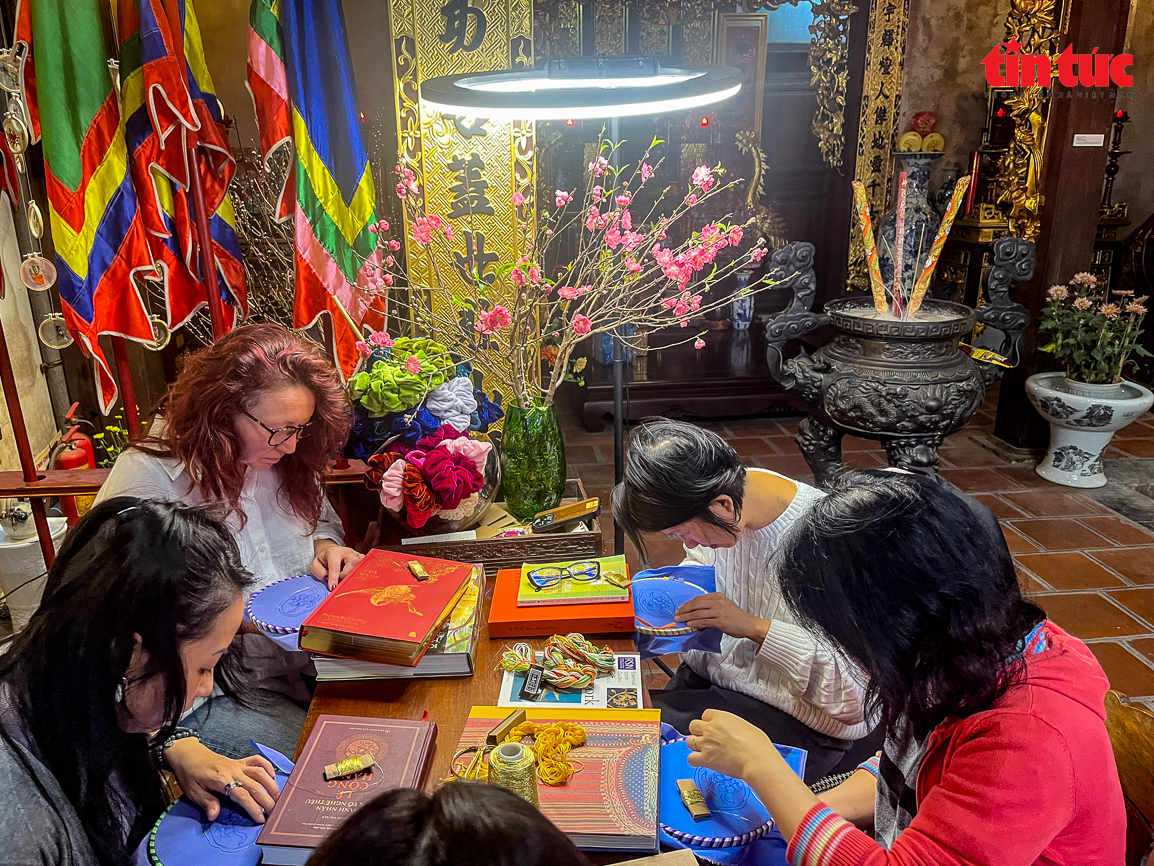
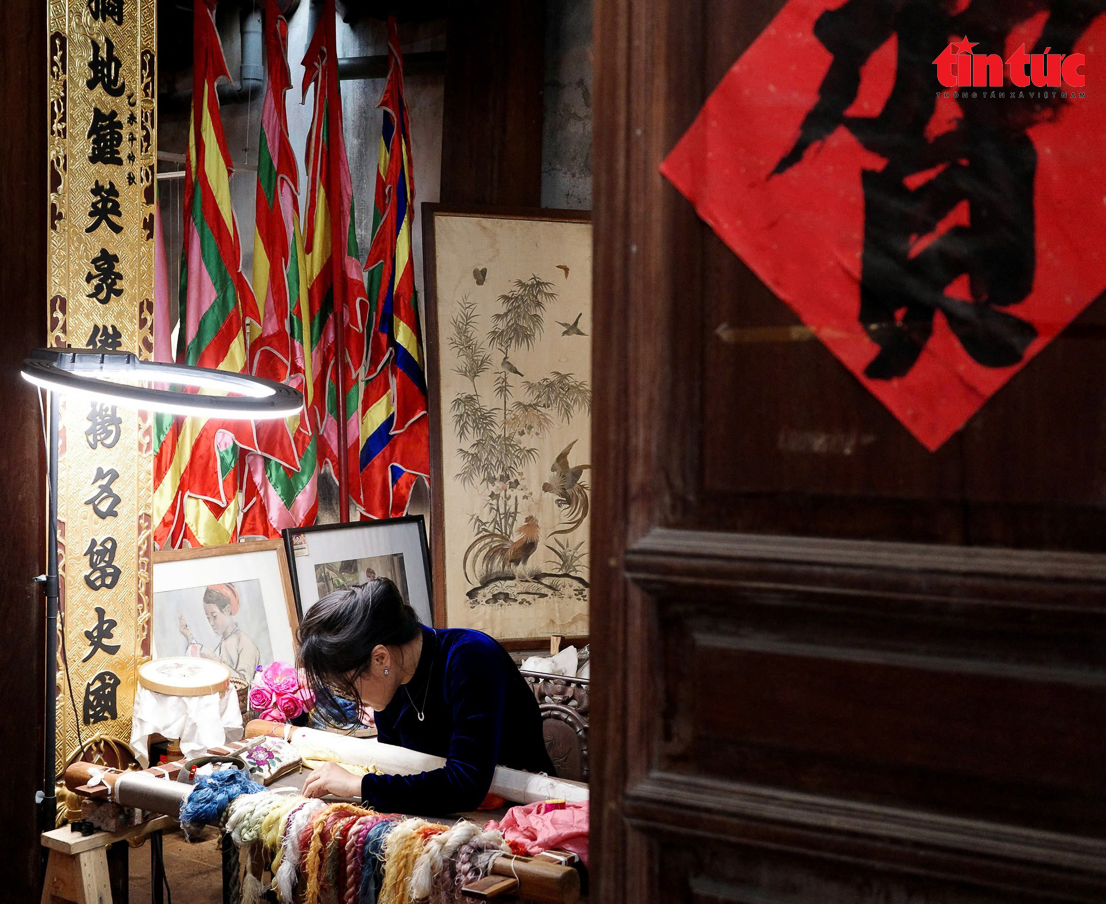 Over the years, part of the communal house space has become a center for exchanging, preserving and practicing embroidery...
Over the years, part of the communal house space has become a center for exchanging, preserving and practicing embroidery...
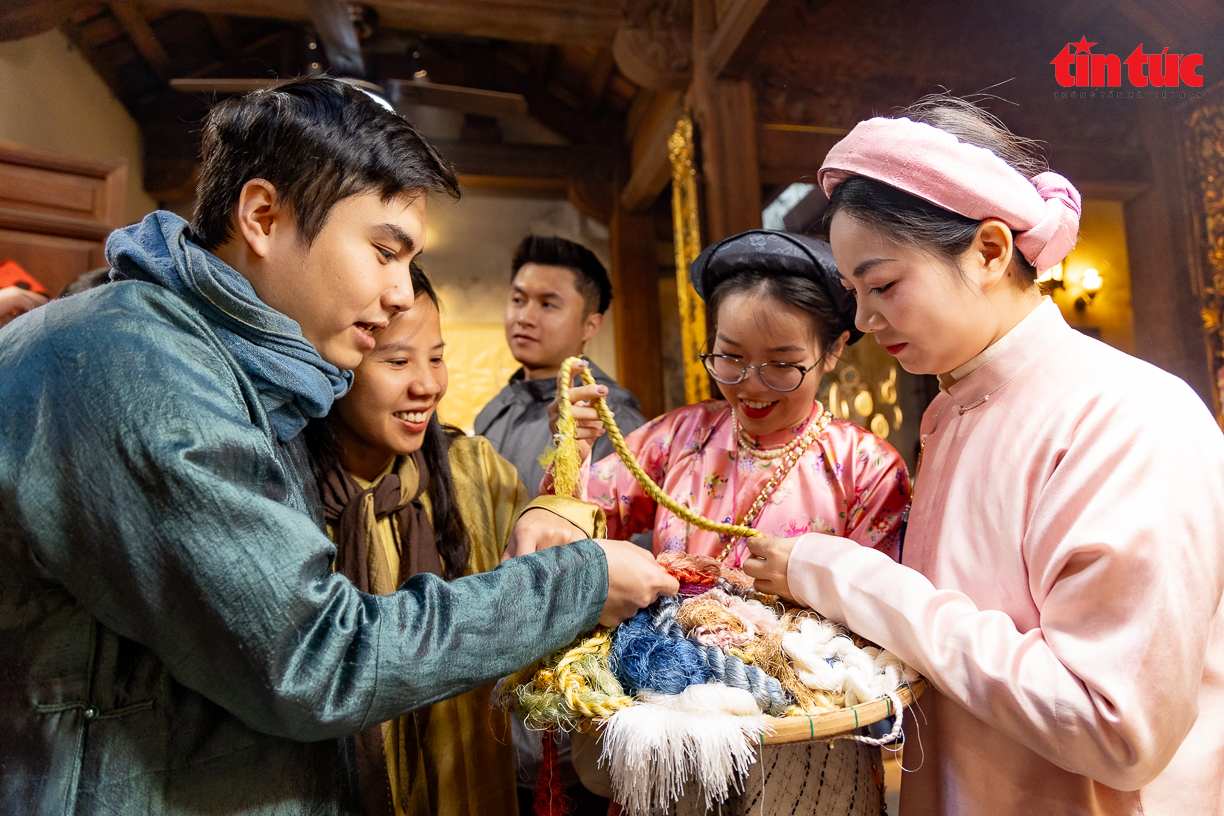 ... to honor the profession's ancestors, contributing to introducing the quintessence to the younger generation and tourists from all over.
... to honor the profession's ancestors, contributing to introducing the quintessence to the younger generation and tourists from all over.
Trung Nguyen/Tin Tuc Newspaper



![[Photo] Panorama of the Opening Ceremony of the 43rd Nhan Dan Newspaper National Table Tennis Championship](https://vphoto.vietnam.vn/thumb/1200x675/vietnam/resource/IMAGE/2025/5/19/5e22950340b941309280448198bcf1d9)
![[Photo] Close-up of Tang Long Bridge, Thu Duc City after repairing rutting](https://vphoto.vietnam.vn/thumb/1200x675/vietnam/resource/IMAGE/2025/5/19/086736d9d11f43198f5bd8d78df9bd41)
![[Photo] President Luong Cuong presents the 40-year Party membership badge to Chief of the Office of the President Le Khanh Hai](https://vphoto.vietnam.vn/thumb/1200x675/vietnam/resource/IMAGE/2025/5/19/a22bc55dd7bf4a2ab7e3958d32282c15)
![[Photo] General Secretary To Lam attends the conference to review 10 years of implementing Directive No. 05 of the Politburo and evaluate the results of implementing Regulation No. 09 of the Central Public Security Party Committee.](https://vphoto.vietnam.vn/thumb/1200x675/vietnam/resource/IMAGE/2025/5/19/2f44458c655a4403acd7929dbbfa5039)
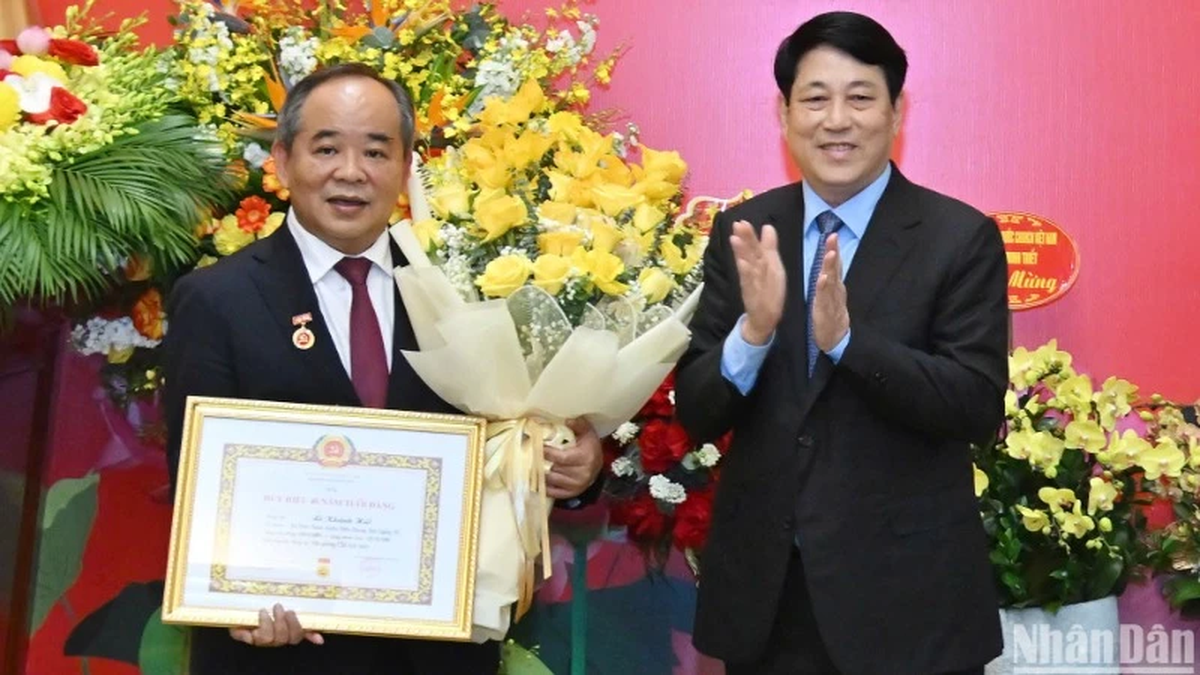
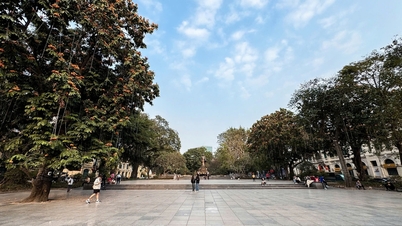


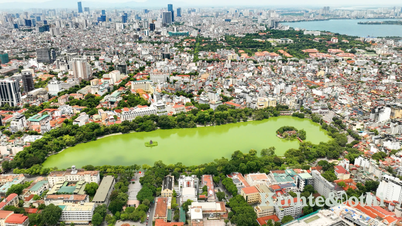


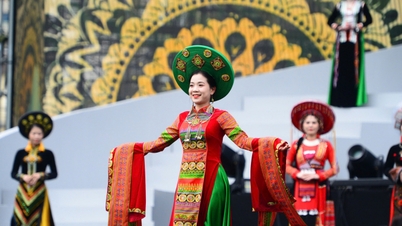
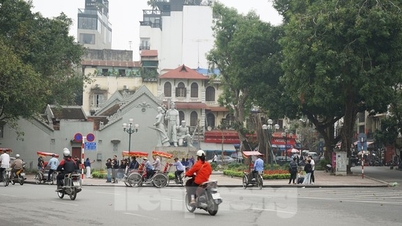

![[Photo] Panorama of the Opening Ceremony of the 43rd Nhan Dan Newspaper National Table Tennis Championship](https://vphoto.vietnam.vn/thumb/402x226/vietnam/resource/IMAGE/2025/5/19/5e22950340b941309280448198bcf1d9)

![[Photo] Close-up of Tang Long Bridge, Thu Duc City after repairing rutting](https://vphoto.vietnam.vn/thumb/402x226/vietnam/resource/IMAGE/2025/5/19/086736d9d11f43198f5bd8d78df9bd41)
![[Photo] President Luong Cuong presents the 40-year Party membership badge to Chief of the Office of the President Le Khanh Hai](https://vphoto.vietnam.vn/thumb/402x226/vietnam/resource/IMAGE/2025/5/19/a22bc55dd7bf4a2ab7e3958d32282c15)
![[Photo] General Secretary To Lam attends the conference to review 10 years of implementing Directive No. 05 of the Politburo and evaluate the results of implementing Regulation No. 09 of the Central Public Security Party Committee.](https://vphoto.vietnam.vn/thumb/402x226/vietnam/resource/IMAGE/2025/5/19/2f44458c655a4403acd7929dbbfa5039)

![[Photo] Prime Minister Pham Minh Chinh inspects the progress of the National Exhibition and Fair Center project](https://vphoto.vietnam.vn/thumb/402x226/vietnam/resource/IMAGE/2025/5/19/35189ac8807140d897ad2b7d2583fbae)




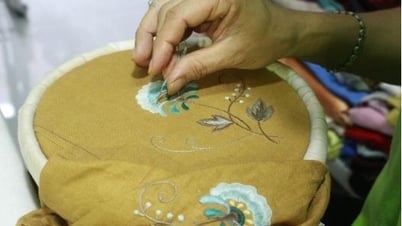
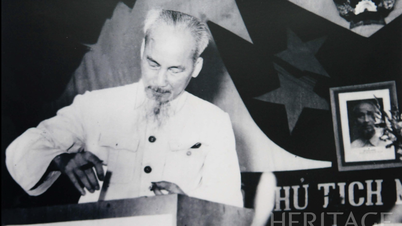
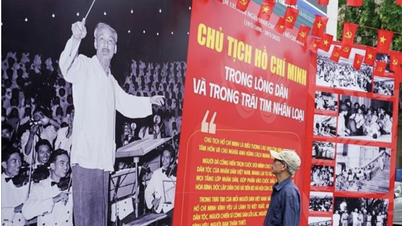
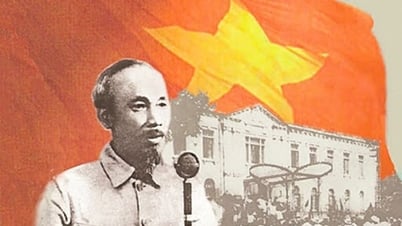

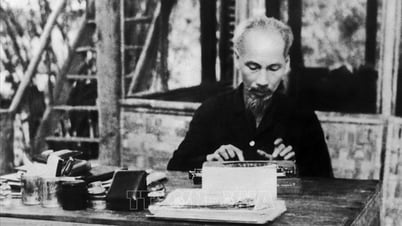
![[Photo] Prime Minister Pham Minh Chinh inspects the progress of the National Exhibition and Fair Center project](https://vphoto.vietnam.vn/thumb/1200x675/vietnam/resource/IMAGE/2025/5/19/35189ac8807140d897ad2b7d2583fbae)
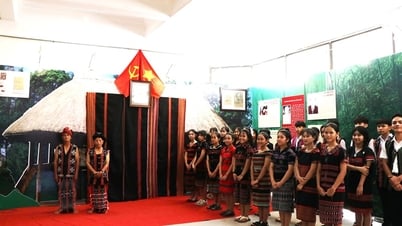





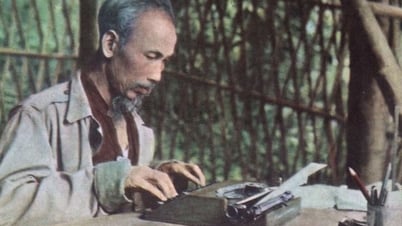
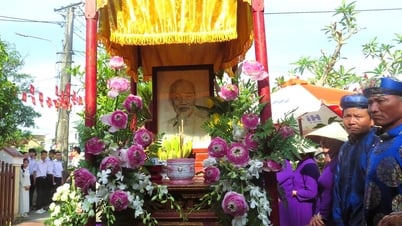


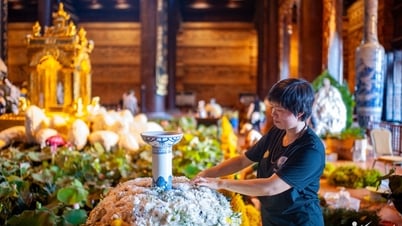






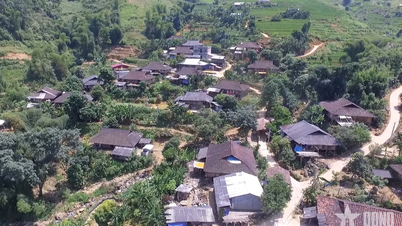









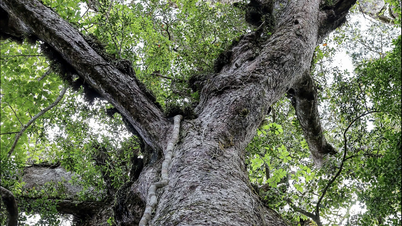




























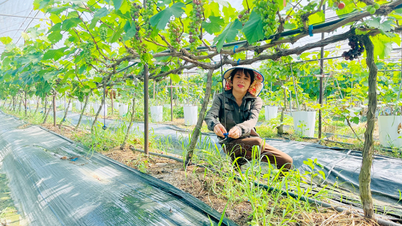



![[VIDEO] - Enhancing the value of Quang Nam OCOP products through trade connections](https://vphoto.vietnam.vn/thumb/402x226/vietnam/resource/IMAGE/2025/5/17/5be5b5fff1f14914986fad159097a677)



Comment (0)